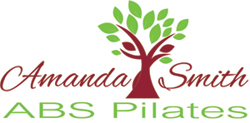Burn Those Calories
As I was running on the beach each morning during my vacation in Hilton Head Island, South Carolina this summer, I witnessed tons and tons of others, like me, doing their best to “run” off those vacation Pina Coladas. I saw young runners, older runners, fast runners and slower runners (like me).
Ask just about anyone and most of us will admit to having run for their cardio workout at one time or another. For millions of people, running has become a favorite way to burn those calories. Some of the benefits of running include:
1. It is a quick way to burn a lot of calories. The average person burns about 100 calories per running mile.
2. It is cost effective. There is little cost to run. You just need a good pair of shoes and the pavement.
3. It is a social activity. It is lots of fun to hook up with our buddies and go for a run to catch up.
4. It can be competitive and fun. There are tons of 5Ks and marathons to train for.
5. It makes you stronger.
6. It strengthens your heart.
7. It lowers your blood pressure.
8. It releases those endorphins and makes us feel good mentally.
9. It is a great way to burn off the stress of the day.
10. It improves our ability to breathe deeply.
Benefits and Injuries
So the benefits are definitely numerous. However, as people get bit by the running bug, many succumb to the overuse injuries that go hand in hand with running. Running is high impact and very repetitive. The movements only occur in the sagittal plane (we run forward, never side to side, so we become strong only in that plane of movement).
Some common overuse injuries associated with running include:
1. Plantar fasciitis (heel pain)
2. Shin splints
3. Trochanteric bursitis (outer hip pain).
4. Tight Ilio tibial band (IT band) leading to hip and/or lateral knee pain.
5. Pain at the knee cap.
Most of these overuse injuries stem from tight, weak hips; an overworked but weak gluteal complex; weak, improperly trained abdominals; and weak leg stabilizers.
Many runners have experienced these injuries at some point or another. Some have even taken steps to cross train so as to decrease the repetitive stress that running places on their bodies. Some cross train by biking or swimming. Others have used Yoga to improve their flexibility and strength.
Cross-Training Tool
Pilates has become the most effective “go to” cross-training tool. It can be extremely beneficial when incorporated into runners’ fitness regimens. The six principles of Pilates—concentration, centering, control, breathing, precision and rhythm&flow—all apply to running. Most important, if a runner can learn how to engage his/her powerhouse and allow motion to originate from it, he/she will run faster, more efficiently, with control and with less risk of injury.
Some of the ways Pilates can help a runner include:
1. Building a stronger core (powerhouse).
2. Improved hip mobility.
3. Improved strength in the gluteal complex.
4. Improved flexibility in the hips and spine.
5. Improved posture awareness.
6. Improved balance.
7. Improved lung capacity and ability to control breathing.
8. Improved ability to concentrate for those longer, tougher runs.
9. Improved fluidity of movement throughout the entire body. Which can improves a runners efficiency during those runs.
Top 10 Pilates Exercises
There are some great Pilates exercises that work the body from top to bottom. Here are a list of the top 10 Pilates exercises that address the specific needs of the runners:
1. Supine Leg Circles – Lie on your back with arms by your sides, palms up and one leg extended toward the ceiling. The toes of the lifted leg are pointed toward the ceiling. The foot of the leg on the mat is flexed. Inhale to prepare, exhale as you trace a circle on the ceiling the size of a basketball, stopping at the top of the circle. Repeat 8x clockwise, 8x counter clock. Repeat this exercise on the opposite leg.
2. Swimming – Lie on your stomach with your arms extended above your head, palms turned down. Lift one arm and the opposite leg slightly off the floor. Inhale to prepare, exhale for five counts as you flutter kick the legs and arms in opposition in small movements. Inhale for five counts as you continue this movement. Repeat 4-6 breaths.
3. Sidelying Leg Series – Side leg lift, side circles, bicycle – Lie on one side with legs extended as if they were an extension of your torso. Tighten your abdomen to stabilize your torso. Lift your bottom rib off the floor. Lift top leg up about 6-8 inches inhaling. Exhale, lower the leg 1/2 way down. Continue 10x, then circles (size of tennis ball) 8x one way, 8x opposite. Then bicycle motion with top leg 6x each way. Stability of torso is key. Repeat on other side.
4. Leg Kick Back/Control Front – Come into a plank on your hands or forearms. Tighten your buttocks and abdominals. Lift one and lower one leg 4x while maintaining plank. Repeat on other side. Rest child’s pose. Repeat 4-6x.
5. Double Leg Kick – Lie on your stomach with your arms bent and fingers interlaced resting at the small of your back. Head is turned one way in this resting position. Draw your navel toward your spine. With a double sniff inhale, kick your heels toward the buttocks while maintaining this position. With the exhale, straighten both legs off the ground as your straighten both arms, hands still clasped behind the back. Lifting the upper body and looking toward the floor. Inhale and rest. Repeat 4-6 sets.
6. Single Straight Leg Stretch (Scissors) – Lie on your back with one leg reaching toward the ceiling and the other leg stretched from the hip hovering about 6inches off the floor. Keeping the back stable on the floor, tighten your abdominals and bow up holding onto that leg toward the ceiling. Inhale to prepare, exhale to switch legs. Repeat 8x.
7. Standing Side Leg Lift Series – Side leg lift, side circles. Stand tall with feet hip width apart. Stand on one leg, lift other one out to the side. Lift and lower 10x not touching the floor, then circles 8x clockwise, 8x counter clock (size of grapefruit). Repeat other side.
8. Push Up – Stand tall with feet hip width apart. Inhale to prepare, exhale roll down to floor, walk out to plank. Do one push up, then walk hands back toward feet and roll up to standing position. Repeat 4-6 sets
9. Mermaid – Sit on the floor with both legs draped to one side as if you were sitting for a portrait. Inhale to prepare, exhale to counter stretch, reaching sideways toward feet. Inhale return to the center, exhale, lift yourself up into a side plank. Repeat 4x one side and 4x other side.
10. Saws – Sit tall with your feet and legs a bit wider than shoulder width. Arms reaching out like a “T” and feet flexed. Inhale as your rotate the upper body to the left, keeping the arms at shoulder height. Exhale as you reach the right hand toward the left little toe (the left arm reaches behind you), twisting the torso to the left. Inhale as you return to the center, exhale reach toward the other side. Continue 4-6 sets.
Going through these exercises every day is a great way to keep the body strong and balanced whether you are a new runner training for your first 5K or a seasoned runner preparing for his/her next marathon.
If you have questions about any of these exercises or how to make them apart of your exercise routine, contact ABS Pilates in Columbus, Ohio today and feel stronger tomorrow.



